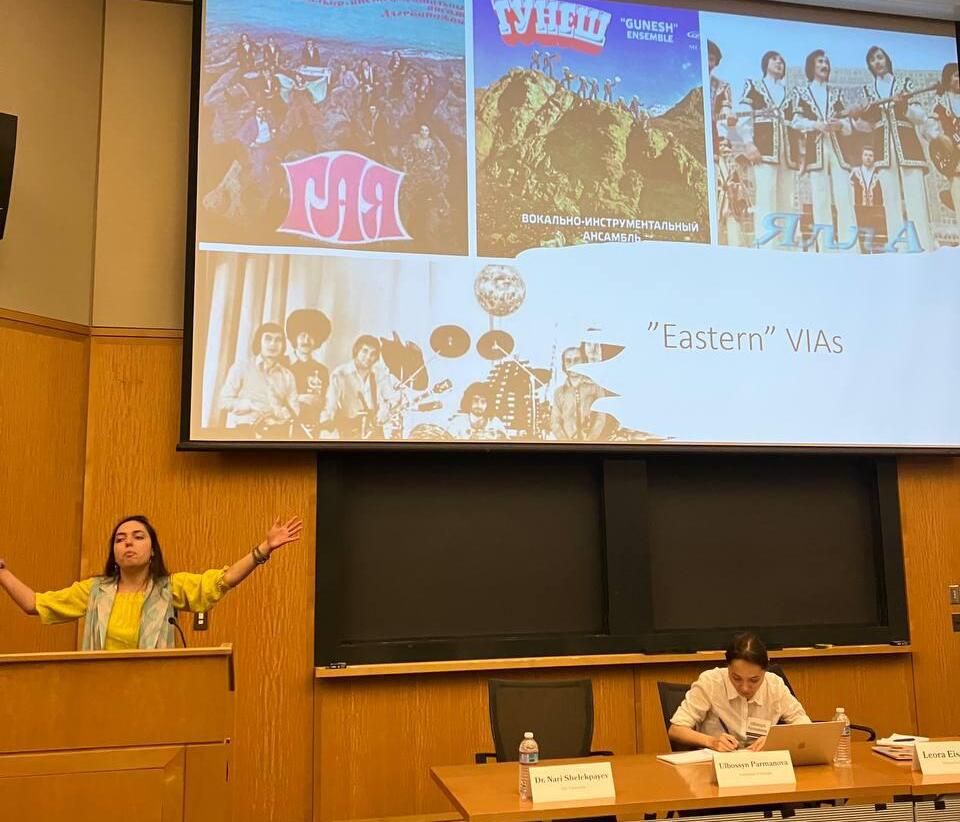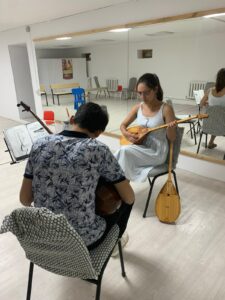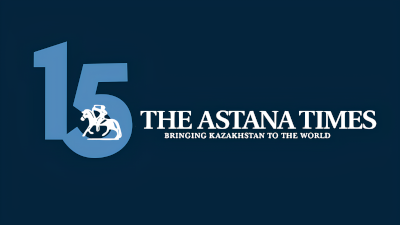ASTANA – Leora Shekufeh Eisenberg, a doctoral student at Harvard and a historian with a degree from Princeton University, has traveled to Kazakhstan to delve deeper into the history of Kazakh music as part of her dissertation on the development of national musical traditions in Central Asia.

Eisenberg’s most fascinating discoveries has been the significant number of vocal-instrumental ensembles across Central Asia. Photo credit: Eisenberg’s personal archieve
Born into a family of musicians, Eisenberg’s upbringing was steeped in classical music.
“My mother and stepfather are from St. Petersburg, and my mother and aunt, both professional pianists, graduated from the Leningrad Conservatory and perform together. My younger brother is a professional violinist, and I studied singing for many years,” she said in an interview with The Astana Times.

Leora Shekufeh Eisenberg, a doctoral student at Harvard University
However, her fascination with Central Asian music came much later. Her interest in the region began in 2017 when she traveled to Tajikistan to study Persian.
“I lived with a host family for two months, and the experience left a lasting impression on me. I knew I wanted to return to Central Asia, though I was not sure how,” she recalled.
The following year, Eisenberg spent a summer in Almaty, interning at the Eurasia Foundation of Central Asia. In 2019, she returned, this time working at the U.S. Consulate. By then, Kazakhstan had become central to her academic pursuits.
“When I started my PhD, which primarily focuses on Soviet history, I knew my research would involve Central Asia, Kazakhstan in particular, given my strong connection to the country,” said Eisenberg.
Before the pandemic, she was awarded a grant to conduct a yearlong study in Pavlodar on language policy and Kazakh language instruction in Russian-language schools. Although COVID-19 disrupted her plans, she adapted by studying Kazakh remotely and conducting interviews via Zoom with residents from Pavlodar and other northern regions.
Music as a mirror of history
Her dissertation aims to be a comparative historical study of Central Asia in Western historical scholarship.
“Some historians tend to see Central Asia as homogeneous, assuming that if something happens in Uzbekistan, it must be the same across the region. But that’s far from reality. Some peoples were nomadic, others sedentary, some were more religious, others less so. They lived in vastly different environments—deserts, mountains, steppes—under distinct political entities, which shaped their historical trajectories differently. Naturally, these differences influenced their relationship with the Soviet regime,” she shared.
The Soviet government, she explained, viewed nomads as a challenge because they were harder to control than sedentary populations. Eisenberg is particularly interested in highlighting these differences through the lens of music.

Legends of Soviet “estrada” Roza Rymbayeva (Kazakhstan) and Uzbekistan’s Farrukh Zakirov with Leora Eisenberg. Photo credit: Eisenberg’s personal archieve
“I examine how certain genres emerged and developed more rapidly in some nations than in others—not due to any inherent superiority but because of sociological factors. Some nations had greater resources, more state support, and better training for composers and musicians. Using examples of music, whether opera, pop, or vocal-instrumental ensembles, I aim to show these distinctions among the Central Asian countries, a perspective largely unexplored in Soviet-era studies,” she explained.
Eisenberg’s research covers the entire Soviet period, tracing the evolution of Kazakh music.
“I want to understand how pop music and vocal-instrumental ensembles evolved—how wartime ensembles of the 1940s transformed into pop groups, or how the evacuation of hundreds of musicians and composers to Central Asia during the Second World War influenced Kazakhstan’s musical landscape in the long term,” she said.
She also investigates why certain songs and operas have endured in national memory while others have faded.
“Dos-Mukasan’s [Kazakh musical band] ‘Toi Zhyry’ has become a key element of Kazakh identity, but what about songs from other vocal-instrumental ensembles of that era? Why is ‘Birzhan and Sara’ opera still beloved while operas like ‘Zhambyl’ or ‘Tereinkul’ are largely forgotten?” said Eisenberg.
Eisenberg’s research relies on various sources, including archival documents from institutions such as the Ministry of Culture and Information, Kazakhconcert, and the State Opera and Ballet Theater. She interviewed musicians, composers, DJs, and promoters who shaped Kazakhstan’s music scene. Newspapers and journals held at the National Library are another key resource for her.
Central Asia music culture queen
When asked about her musical influences, Eisenberg named several Kazakh artists who have inspired her work.
“I love Yermek Serkibayev. His song ‘Nado mnoi nebo sinee’ [A Blue Sky Above Me] has been a constant source of inspiration. Yeskendir Khassangaliyev’s ‘Almatym Menin’ is another favorite—his voice is just dreamy. I listen to it all the time,” she said.
“I have been trying to map out the history of Kazakh estrada [popular music], but for a long time, there was little evidence. We knew it existed, but there was a gap in documentation. Then, I found recordings from the late 60s in the archive of film, photo, and sound recordings, including Khassangaliyev’s work, and I thought, ‘Aha! This helps define the origins of Kazakh estrada, which I trace back to 1957,’” added Eisenberg.

Eisenberg during her dombra lessons. Photo credit: Eisenberg’s personal archieve
One of her most fascinating discoveries has been the significant number of vocal-instrumental ensembles across Central Asia.
“We remember the Yalla band in Uzbekistan and Dos-Mukasan in Kazakhstan, but there were so many others. Zhetigen, for instance, was popular but never reached the same level of fame. I love reviving the memory of these groups and imagining what could have been had they gained wider recognition,” said Eisenberg.
Eisenberg has also taken the opportunity to engage with Kazakhstan’s traditional music firsthand. She always made time to attend performances, and I even took a few dombra lessons.
Eisenberg envisions her research as a foundation for future comparative studies on Central Asia’s musical traditions. She hopes it will become the first historical exploration of the region’s musical evolution in English-language scholarship.
“There has been little academic work on popular music in Kazakhstan, though Uzbekistan has seen more research in this area. I am excited to contribute to the field and highlight the region’s rich musical heritage,” she said.
She’s affectionately known as the Central Asia music culture queen in the United States due to her deep passion for the subject.
“I think about these musicians all the time, I even dream about them. Some who are no longer with us feel like they have become a part of my life. I talk to them, share my thoughts, and even seek their advice. I am excited to bring their stories to the world, especially to Central Asians, who I believe will appreciate learning more about the artists, performers, and composers they admire,” added Eisenberg.


